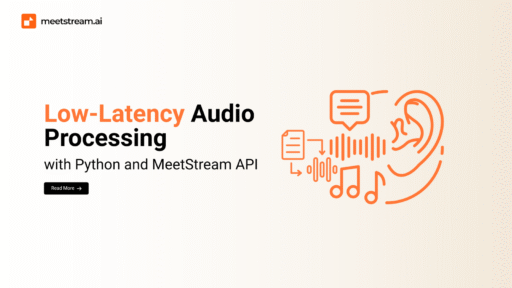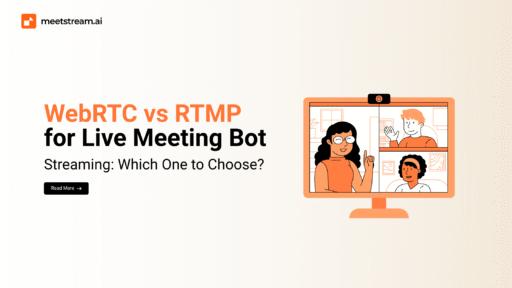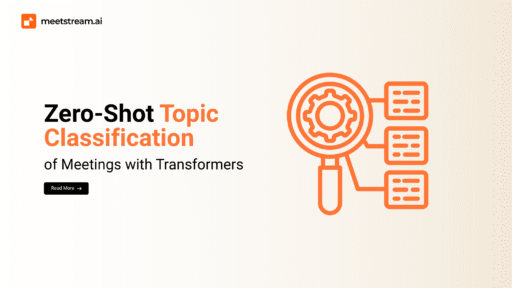Meeting bots are poised to change how we interact with virtual meetings, leveraging AI technology to streamline various aspects of meeting management. This article explores the evolving landscape of meeting bots, highlighting their capabilities, benefits, and potential impact on productivity and workflow automation. We will examine how integrating meeting bots with CRM systems and conferencing platforms can unlock new levels of efficiency and data-driven decision-making.
Introduction to Meeting Bots
Understanding Meeting Bots and Their Role
Meeting bots are AI-powered virtual assistants designed to automate and simplify various tasks associated with meetings. These bots can seamlessly integrate with conferencing platforms like Zoom, Google Meet, and Microsoft Teams, providing a range of functionalities from scheduling and sending reminders to transcribing meetings and generating meeting summaries. The primary role of a meeting bot is to save time and enhance productivity by automating mundane tasks, allowing participants to focus on the core agenda and discussion. Using bots in this context transforms virtual meetings into more efficient and actionable experiences, fostering better collaboration and data capture.
The Evolution of Conversational AI in Meetings
The evolution of conversational AI has significantly impacted the functionality and effectiveness of meeting bots. Early meeting bots offered basic features, but advancements in natural language processing (NLP) and artificial intelligence have led to the development of smarter, more interactive AI systems. Conversational AI now enables meeting bots to understand context, identify action items, and provide real-time assistance during meetings. This allows for a more natural and seamless interaction, making the AI bot feel less like a tool and more like an active participant. As conversational AI continues to advance, meeting bots are becoming AI meeting agents, that are increasingly sophisticated in their ability to transcribe meetings and summarize meetings, anticipate needs, and provide valuable insights from past meetings.
Benefits of Automating Meeting Management
Automating meeting management through the use of AI-powered meeting bots provides numerous benefits for both individuals and organizations. One key advantage is the ability to transcribe meetings accurately and efficiently, creating a searchable record of the discussion. This integration allows for better follow-up and accountability, ensuring that action items are addressed promptly. Furthermore, meeting bots can analyze conversational data to identify key themes, track sentiment, and provide valuable analytics for sales teams and customer support. By automating these tasks, businesses can streamline their workflow, save time, and make more data-driven decisions. In 2025, expect to see even more advanced automation, integrating with various platforms to further simplify the meeting experience.
Key Features of Conversational AI in Meeting Bots
AI-Powered Transcriptions for Enhanced Accessibility
One of the standout features of modern meeting bot technology is AI-powered transcriptions, designed to enhance accessibility for all participants. These AI systems automate the process of converting spoken words into text in real-time, ensuring that meeting notes are captured accurately. The AI bot uses conversational AI to understand context, filter out background noise, and differentiate between speakers, leading to more precise transcriptions. This not only benefits individuals who are hard of hearing but also provides a valuable resource for reviewing past meetings, identifying action items, and improving followup. Such functionality is especially useful in regulated industries where detailed records of discussions are essential.
Integration with CRM Systems for Seamless Workflow
Integration with Customer Relationship Management (CRM) systems is another critical aspect of modern meeting bot capabilities, promising a seamless workflow for sales teams and customer support. By integrating meeting bot functionalities with platforms like Salesforce or HubSpot, businesses can automate the process of updating customer records with information gathered during virtual meetings. The AI can analyze conversational data, identify key discussion points, and automatically log them into the CRM, saving time and reducing manual data entry. This data-driven approach helps to streamline communication, improve followup, and ensure that everyone is aligned on customer needs and objectives. The integration of CRMs with AI-powered meeting tools that change how teams interact with clients, fostering better relationships and driving sales.
Smarter Scheduling and Management of Virtual Meetings
Advanced meeting management features of meeting bots go beyond simple reminders and include smarter scheduling and management of virtual meetings. AI algorithms can analyze participant calendars, suggest optimal meeting times, and even send automated invitations. The meeting bot can seamlessly integrate with conferencing platforms such as Zoom, Google Meet, and Microsoft Teams, making it easier to schedule and manage meetings from a single interface. Features like automated agenda distribution, real-time polling, and action item tracking enhance engagement and accountability during virtual meetings. By automating these tasks, meeting bots allow organizers to streamline the workflow and focus on the content of the meeting rather than administrative details. In 2025, expect to see these AI tools anticipate needs even further, based on past meetings and user behavior.
Use Cases for Meeting Bots in 2025
How Businesses Are Leveraging Meeting Bots
In 2025, businesses are finding even more diverse use cases for meeting bots, far beyond simple scheduling and reminders. AI-powered meeting bots are now instrumental in automating complex workflows, providing real-time support during virtual meetings, and generating actionable insights from conversational data. Sales teams are leveraging meeting bots to automatically transcribe calls, identify key selling points, and integrate this information directly into their CRM systems. Customer support departments are using bots to streamline the followup process, ensuring that all customer inquiries are addressed promptly and efficiently. HR departments are employing meeting bots to automate the interview process, screen candidates, and provide real-time feedback to hiring managers. These examples illustrate how AI technology is not just simplifying individual tasks but transforming entire business processes.
Case Studies: Success Stories of Conversational AI
Numerous case studies demonstrate the significant impact of conversational AI on business outcomes through the integration of meeting bots. For example, a leading software company integrated meeting bots into their Microsoft Teams environment and saw a 30% increase in sales teams productivity due to automation of followup tasks. Another company in the healthcare sector utilized AI-powered meeting bots to transcribe meetings with patients, resulting in more accurate and comprehensive medical records. A global consulting firm implemented meeting bots to summarize meetings, track action items, and distribute meeting summaries seamlessly to all participants, leading to improved meeting management and increased accountability. These success stories highlight the tangible benefits of using bots in various industries and underscore the potential for even greater automation and efficiency in the future.
Future Trends and Predictions for Meeting Bots
Looking ahead, the future of meeting bots in 2025 promises even more sophisticated AI-powered functionality and wider integration across various platforms. We can anticipate meeting bots becoming more proactive, smarter, and capable of anticipating user needs based on past meetings and conversational data. AI models will advance to the point where bots can generate meeting agendas automatically, seamlessly manage complex scheduling scenarios, and even provide real-time coaching and feedback to speakers during virtual meetings. Integration with other business functionalitys, such as project management tools and analytics platforms, will become even tighter, creating a seamless workflow for data-driven decision-making. Generative AI will also play a larger role, enabling bots to create personalized meeting notes, summarize meetings with higher accuracy, and translate languages in real-time, fostering better collaboration across global teams.
Building Effective Meeting Bots
Strategies for Designing Conversational Interfaces
Designing effective conversational interfaces for meeting bots requires careful consideration of user experience and functionality. A successful AI bot should be intuitive and easy to interact with, guiding users through various features seamlessly. One crucial aspect is providing clear and concise prompts, ensuring that users understand the bot’s capabilities and how to access them. Another is incorporating natural language processing (NLP) to enable the meeting bot to understand and respond to a wide range of user inputs. Implementing visual cues and interactive elements can further enhance the conversational experience, making it more engaging and user-friendly. Iterative testing and user feedback are essential for refining the interface and ensuring that it meets the needs of the target audience.
Utilizing APIs for Meeting Bot Development
Leveraging Application Programming Interfaces (APIs) is essential for meeting bot development, enabling integration with various platforms and services. APIs from conferencing platforms like Zoom, Microsoft Teams, and Google Meet allow bots to access meeting data, manage meetings, and interact with participants. AI and NLP APIs can enhance conversational abilities, enabling bots to understand and respond to user input effectively. APIs for CRM systems facilitate integration with customer data, allowing bots to automate data entry and provide real-time insights during meetings. By strategically using APIs like meetstream.ai, developers can create AI-powered meeting bots that offer a wide range of functionality and enhance the overall meeting experience. Using APIs for meeting bots can revolutionise the workflow and simplify meeting management.
Best Practices for Managing Conversational Data
Effective management of conversational data is crucial for the success and functionality of meeting bots. This involves implementing strategies for data collection, storage, security, and analytics. Data should be collected ethically and transparently, with user consent and privacy considerations as top priorities. Secure storage and encryption are essential to protect sensitive information from unauthorized access. Analytics can be applied to conversational data to identify trends, improve bot performance, and gain insights into user behavior. It’s important to establish clear guidelines for data retention and deletion, ensuring compliance with relevant regulations. By following these best practices, organizations can leverage conversational data to enhance the capabilities of meeting bots while safeguarding user privacy and maintaining data integrity. The AI can summarize meetings and improve followup with proper data management, streamlining the workflow seamlessly.





